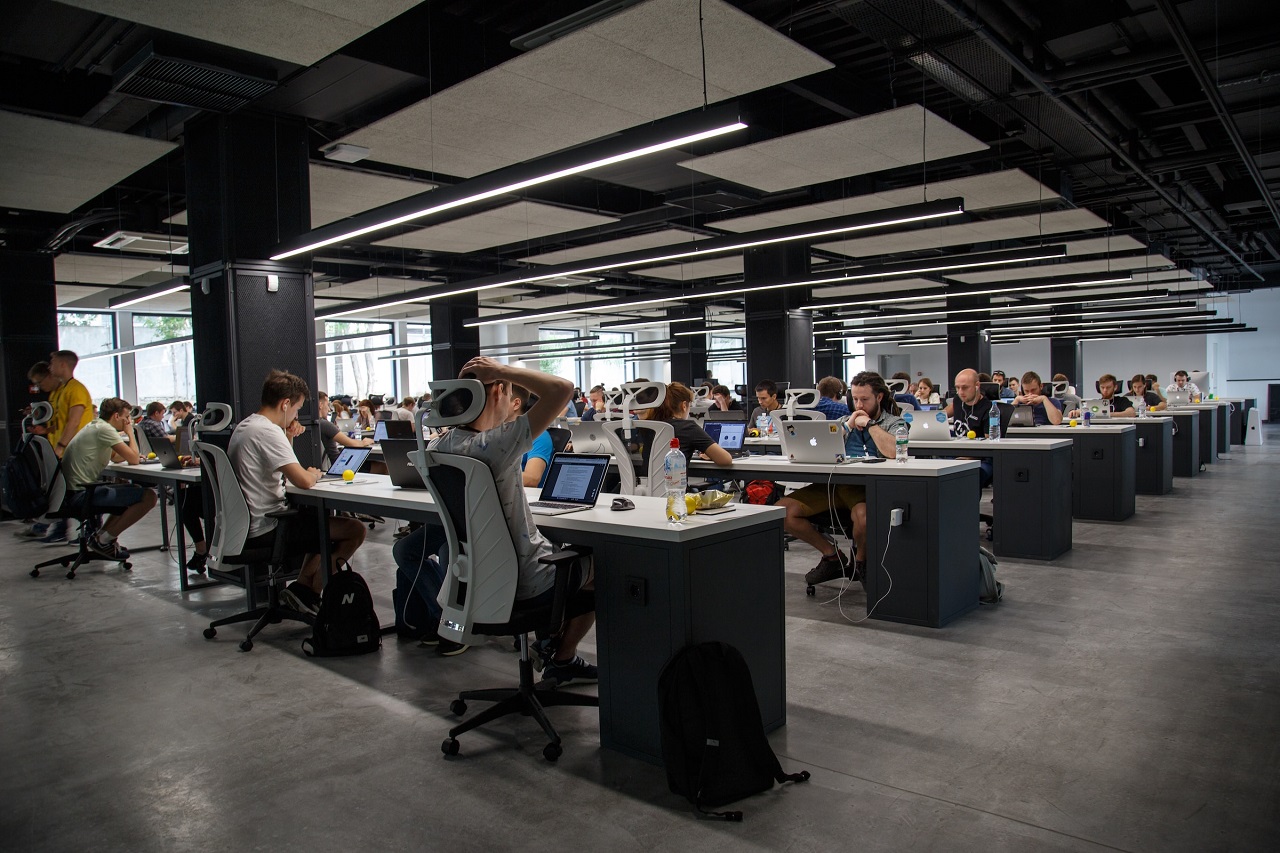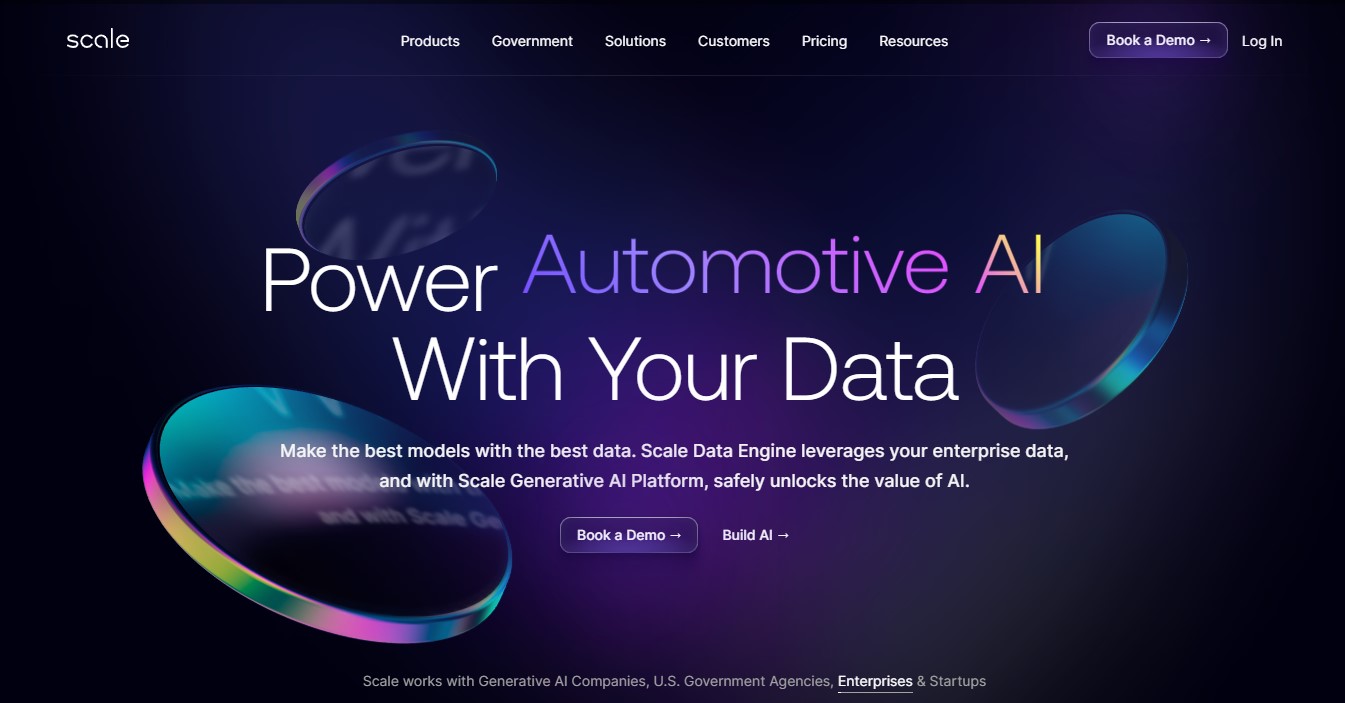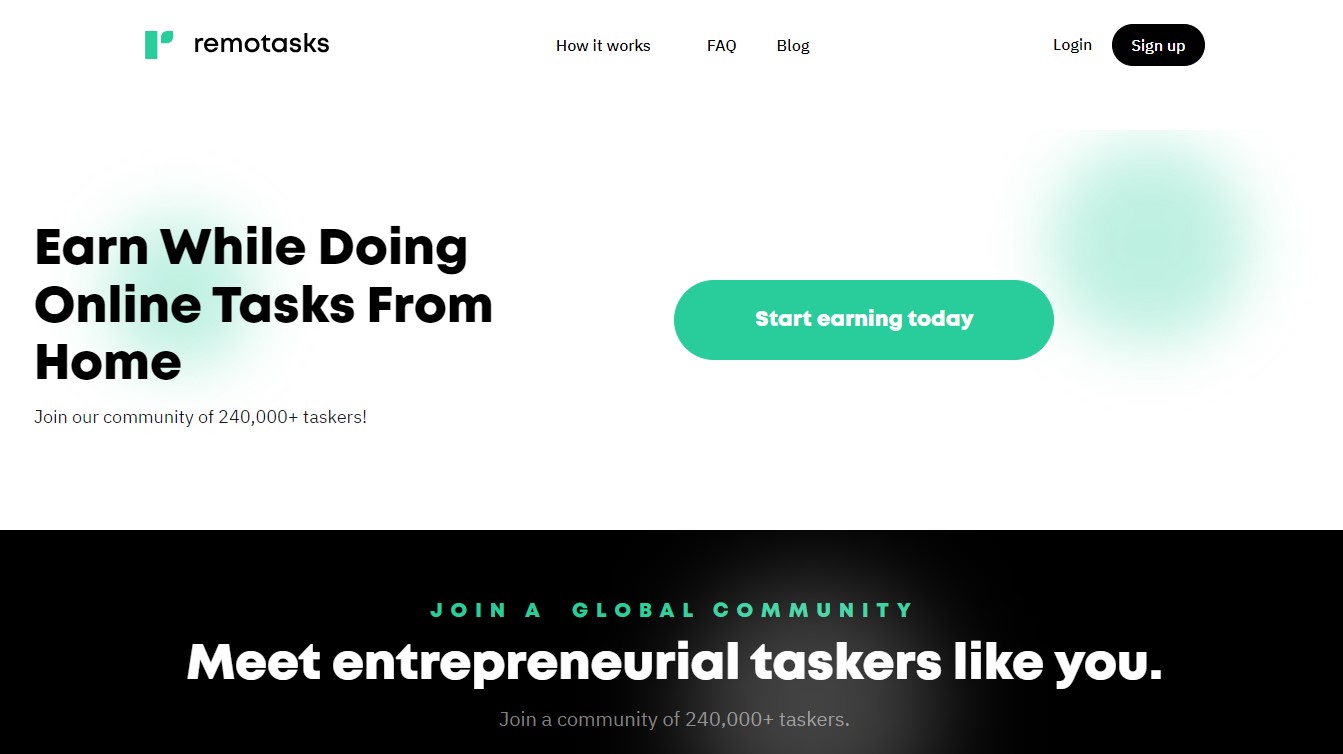Exploitation In The Digital Age - Digital Sweatshops Exposed
The disturbing world of digital sweatshops seems to go unnoticed. Discover the shocking realities of online labor exploitation in this modern-day injustice.
Author:Daniel BarrettOct 25, 20232257 Shares53739 Views

The world has indeed become more industrialized, more digitized that we even now have what we call digital sweatshops.
Do you mean machines could be behind some of those popular sneakers or in some of your favorite clothing brands?
Not quite like that. It’s got something to do with artificial intelligence (AI).
AI is increasingly integrated into various industries, from healthcareand finance to transportation and education.
It possesses the power to improve efficiency, enhance decision-making, and even save lives. However, if not properly managed, AI can also perpetuate inequalities, infringe on privacy, and pose risks to safety and security.
In fact, it’s the force behind today’s digital sweatshops.
AI Labor Exploitation
The development and deployment of AI technologies often involve a range of labor-related issues, including the exploitation of workers in various ways.
Here are some key aspects of the labor-related challenges in the AI industry, along with examples:
a. Data Labeling and Annotation
Many AI algorithms require large datasets for training.
Data labeling and annotation involve human workers categorizing and labeling data points, and this task is often tedious and repetitive.
Instances:In 2019, The New York Times reported on the harsh working conditions for data labelers, who are often underpaid, overworked, and subjected to stringent quality control measures.

b. Gig Economy Workers
Companies often rely on gig economy workers for data collection, data labeling, and other AI-related tasks.
These workers are often in precarious employment situations without benefits or job security.
Instances:Amazon’s Mechanical Turk platform is a prime example where gig workers are paid very low wages for tasks related to AI, such as data labeling.
c. Bias and Fairness Concerns
AI systems can perpetuate bias and discrimination when they are trained on biased data.
Addressing these issues requires diverse and expert teams to review and correct algorithms.
Instances:Numerous cases of bias in AI, from gender and racial biases in facial recognition technology to unfair algorithms in credit scoring, highlight the importance of addressing this concern.
d. Surveillance and Privacy
AI technologies are used in surveillance systems, raising concerns about privacy. Workers monitoring surveillance feeds may face stressful and invasive work conditions.
Instances:Reports have exposed the working conditions of content moderators for platforms like Facebook, who are tasked with reviewing and removing sensitive content.
e. Development and Research
The pressure to innovate and stay competitive can lead to demanding work environments for AI researchers and engineers, often involving long working hours and high stress.
Instances:Reports of “burnout” among AI researchers in academia and industry have highlighted the challenges in this field.
Per a January 2023 Al Jazeera article, several U.S.-based content moderators hired by Facebook experienced post-traumatic stress disorder (PTSD).
f. Ethical Concerns
Developing and deploying AI with ethical considerations often requires the work of ethicists and specialists in responsible AI, who may face challenges in pushing for ethical principles.
Instances:The resignations of ethicists and AI researchers from Google’s AI ethics team in 2021 highlighted the difficulties in balancing profit-driven goals with ethical concerns.
g. Intellectual Property
The AI industry is highly competitive, and the desire to protect intellectual property rightscan sometimes lead to legal disputes and exploitation of smaller players.
Instances:High-profile patent and intellectual property disputes in the AI industry have shown how companies can sometimes prioritize their interests over fair competition.
To address these labor-related issues in the AI industry and to crush digital sweatshops, there must be:
- regulations
- ethical guidelines
- industry standards
According to a 2010 article by the MIT Technology Review, for Jonathan Zittrain, a Public Policy and Internet law professor, the online labor market can be exploitedand turned into digital sweatshops.
In his 2009 article for Newsweek, Professor Zittrain, who’s also the co-founder of Berkman Klein Center for Internet & Society (est. 1998) located in Harvard Law School, wrote, as quoted by MIT:
“„Online contracting circumvents a range of labor laws and practices, found in most developed countries, that govern worker protections, minimum wage, healthand retirement benefits, child labor.- Prof. Jonathan L. Zittrain
In her January 2023 Al Jazeera article, Kenyan political analyst Nanjala Nyabola talks about the exploitation of employees, particularly those hired as content moderators.
Nyabola, the author of Digital Democracy, Analogue Politics (2018), wrote that the companies employing these workers, given their meager salary, among other factors, appear to be running their own digital sweatshops.
As she commented:
“„If this is all starting to sound like sweatshops are making the digital age work, it should - because they are.- Nanjala Nyabola
AI development and deployment shouldn’t lead to the production of digital sweatshops.
They must be conducted in an ethical and socially responsible manner, with fair compensation and working conditions for those involved in the process.
What Is A Digital Sweatshop?
Digital sweatshops are a concept that emerged in response to the changing landscape of work in the digital age.
They’re also known as:
- cyber sweatshops
- electronic sweatshops
- online sweatshops
- virtual sweatshops
A sweatshop, in its traditional and generally accepted definition, is a workplace where people work under harsh conditions for long hours and low wages, typically to manufacture products, often clothing and footwear.
While traditional sweatshops involve manual labor in industries like textiles and manufacturing, digital sweatshops exploit workers in the virtual realm, primarily through the internet.
Key characteristics of digital sweatshops include:
a. Low Wages
Workers in digital sweatshops typically earn very low wages for the tasks they perform.
These tasks often involve:
| data entry | online research |
| content moderation | other repetitive, monotonous activities |
JASON Institute for Peace and Security Studies (est. 1975), a non-governmental organization in the Hague, the Netherlands, call those working in digital sweatshops as “invisible workers.”
According to this Dutch NGO, they only receive $1.32 to $2 per hour.
In Kenya, they receive less than $2/hour, reported Al Jazeera in January 2023.
In the late ‘90s, according to a 1999 Wired article, AOL operated a digital sweatshop - referred to in the article as “cyber-sweatshop” - where workers get paid $21.95 per month.
b. Long Hours
Digital sweatshop workers are often required to work long hours, sometimes exceeding the standard working week, without proper compensation.
Worse, there’s no overtime pay, too.
c. Lack of Job Security
Many digital sweatshop workers are hired on a temporary or contract basis, with little to no job security. They may be let go without notice or recourse.
d. Precarious Working Conditions
Workers in digital sweatshops may not have access to basic labor rights and protections. They might work from home or informal setups without:
- benefits
- job security
- the ability to form a union
e. No Employee Benefits
In contrast to traditional employment, digital sweatshop workers often lack benefits, such as:
- health insurance
- paid time off
- retirement plans
f. Global Workforce
Digital sweatshops often draw workers from around the world, taking advantage of the global labor market and wage differentials.
g. Lack of Transparency
The organizations that run digital sweatshops may not be transparent about their practices, making it difficult to track and regulate their operations.
h. Repetitive Tasks
Workers may be tasked with performing repetitive and mind-numbing jobs, which can lead to burnout and mental health issues.
These tasks may include:
- labeling images
- transcribing audio
- moderating online content
Digital sweatshops are prevalent in the gig economy, where freelance platforms and microtask websites facilitate the hiring of workers for short-term, low-paying jobs.
While these platforms have created opportunities for remote work, they have also opened the door to exploitation when labor standards are not enforced or regulated.
The lack of geographic proximity between employers and employees in the digital world can make it challenging to monitor and enforce fair labor practices.
Efforts to combat digital sweatshops include:
- encouraging ethical outsourcing practices
- promoting fair labor standards for digital workers
- increased scrutiny and regulation of online labor platforms
They also raise awareness about the challenges faced by those working in digital sweatshops and push for improved labor rights in the digital age:
- advocacy groups
- labor unions
- government agencies

Scale AI Digital Sweatshop
A 5-year-old article talks about how the growth of online work carries with it an impending threat of the creation of digital sweatshops.
In that 2016 Vice article, Mark Graham, an Oxford Internet Institute associate professor and senior research fellow, said that traditional sweatshops can have its own counterpart in the online world.
As Professor Graham, also an associate professor in the University of Oxford’s School of Geography and the Environment, stated:
“„Imagine people doing things like spending eight hours a day tagging images, or transcribing little text snippets over and over again - you're essentially part of a virtual assembly line.- Prof. Mark Graham
That virtual assembly line takes place in “content moderation farms in the Philippines,” according to Prof. Graham.
This Southeast Asian country is also the subject of a The Washington Post article published in August 2023. It reveals digital sweatshops operating in some poor Philippine provinces.
The employer? Scale AI, a San Francisco-based software company co-founded by two Americans of Chinese descent:
- Alexandr (yes, no “e”) Wang, 26 and a billionaire
- Lucy Guo, 29 (net worth as of June 2023, per Forbes: $360 million)
Scale AI owns Remotasks, which hires no less than 10,000 Filipinos to do digital work.
Creating job opportunities? Great! However, The Washington Post disclosed that it pays workers with meager salaries.
One “Tasker” - the term used to refer to a Remotasks worker - said that she only received $2 for four hours of online work.
Another got paid $12 for a 3-day work. A male “Tasker” expected over $150 in total payments but Remotasks didn’t pay him. Not only that, he got fired.
Remotasks does these things to its Filipino workers:
- delay their salaries
- give incomplete payments
- remove them from work at whim (without proper notice) and for no justified reason at all
It’s one of the digital sweatshops operating in the Philippines after all!
In 2021, according to Forbes, Scale AI had a value of $7.3 billion based on the estimates of private investors.
Ethical AI
The ethics of artificial intelligence is a critical and evolving field of study that examines the moral and societal implications of AI technology.
Understanding and addressing these ethical considerations is important due to the growing impact of AI on various aspects of our lives. This importance lies in AI’s potential to shape our future.
For one, AI ethics plays a significant role in addressing and mitigating the proliferation of digital sweatshops.
Here’s how AI ethics intersects with this issue:
a. Fair Wages and Worker Rights
AI ethics calls for fair compensation and worker rights, which is crucial in digital sweatshops.
Many workers in these environments often receive low wages and lack job security. Ethical AI practices demand that these workers are:
- paid fair wages
- provided with benefits
- granted job security
b. Worker Well-Being
AI ethics emphasizes the importance of ensuring the well-being of workers.
Digital sweatshops can be emotionally taxing and can lead to stress and mental health issues due to the nature of the work (e.g., content moderation involving disturbing content).
Ethical AI practices require that employers take measures to protect workers’ mental and emotional health.
c. Automation and Job Displacement
Ethical AI also addresses the potential for job displacement by automation.
The proliferation of digital sweatshops is, in part, due to the demand for human labor in tasks that AI can perform.
Ethical AI practices call for a fair transition for affected workers to avoid exploitation and job loss. There should be retraining and reskilling programs offered to them, for example.
d. Transparency and Accountability
Ethical AI frameworks emphasize transparency and accountability in the use of AI.
In digital sweatshops, it’s often challenging to track the decision-making processes and the impacts of AI algorithms on workers.
Establishing transparency and accountabilitymechanisms can help protect workers from exploitation and harmful working conditions.
e. Algorithmic Bias and Discrimination
AI ethics includes addressing algorithmic bias and discrimination.
Workers in digital sweatshops may face bias in content moderation or data labeling tasks.
Ethical AI practices work to reduce bias in AI systems to ensure that workers are not perpetuating harmful stereotypes or discriminatory practices.
f. Informed Consent
AI ethics also calls for informed consent.
Workers in digital sweatshops may not always be fully aware of the potential physical and mental health risks associated with their tasks.
Ethical practices require that workers are informed about the potential harms and are given the choice to consent to such work.
g. Human Oversight
Ethical AI encourages human oversight of AI systems.
In the context of digital sweatshops, it’s important to ensure that human workers can intervene when AI systems make incorrect or harmful decisions, which can protect them from undue stress and exploitation.
All in all, AI ethics tries to prevent the creation of digital sweatshops by advocating for:
| fair treatment | transparency |
| worker rights | accountability |
| well-being | reduced bias in the use of AI |
It aims to create a more ethical and humane work environment in the digital labor market, mitigating the exploitation of workers, and ensuring their welfare in an increasingly AI-driven world.
Digital Sweatshops - People Also Ask
What Is An AI Worker?
An AI worker isn’t someone who works with artificial intelligence. They’re not found in digital sweatshops. AI workers are not even humans in the first place.
AI workers are software programs or machines that perform tasks or functions that would typically require human intelligence.
Based on their programming and algorithms, they can:
- process data
- make decisions
- carry out various tasks
However, they lack certain human characteristics, such as:
- consciousness
- emotions
- self-awareness
Also, AI workers are tools created and controlled by humans to automate or assist with specific tasks.
What Are People That Work With AI?
AI engineers are some of the people who work with artificial intelligence.
These professionals specialize in the design, development, and deployment of AI systems.
They also create and implement AI algorithms, models, and applications that can perform tasks that typically require human intelligence, such as:
- computer vision
- machine learning
- natural language processing
According to Microsoft, AI engineers basically make AI “function like a human brain.”
In addition, they must have expertise in the following fields:
| data science | programming |
| data engineering | software development |
Workers at digital sweatshops may be doing things for AI companies.
There are several other jobs that involve working with AI in various capacities.
According to an October 2023 article by Springboard, below are ten AI careers that command high salaries:
| Job Title | Average Annual Salary (in U.S. Dollar) |
| Machine Learning Engineer | $170,000 to $200,000 |
| Data Scientist | $105,000 to $200,000 |
| Big Data Engineer/Architect | $151,300 |
| Software Architect | $150,000 |
| Software Engineer | $108,000 to $150,000 |
| Research Scientist | $99,800 |
| Robotics Engineer | $87,000 to $130,000 |
| Business Intelligence Developer | $86,500 to $130,000 |
| Natural Language Processing (NLP) Engineer | $78,000 to $100,000 |
| Data Analyst | $65,000 to $100,000 |
On its website, Northeastern University in Boston shared that by 2029, job vacancy for software developers will increase by 22 percent and will lead to 316,000 jobs, according to a forecast by the U.S. Bureau of Labor Statistics.
What could be the status of digital sweatshops five years from now?
What Is An Example Of An AI Work?
Per IoTForAll.com, here are eight examples of an artificial intelligence work:
| chatbots | search and recommendation algorithms |
| e-payments | social media |
| facial detection and recognition | text editors or autocorrect |
| maps and navigation | virtual or digital assistants |
Vacancies at digital sweatshops are examples of AI work but they shouldn’t be promoted.
Final Thoughts
Digital sweatshops refer to the exploitation of digital laborers or online workers.
The ethics of artificial intelligence should be addressed to guarantee that AI technology benefits humanity as a whole rather than a select few.
Moreover, it should serve as a guide for responsible AI development where AI technologies are used for the betterment of humanity while minimizing potential harms.
Finally, addressing AI ethics can build trust among users, foster innovation, and minimize unintended consequences, such as the creation and proliferation of digital sweatshops.

Daniel Barrett
Author
Latest Articles
Popular Articles

